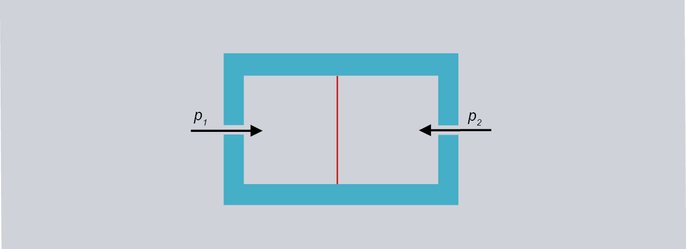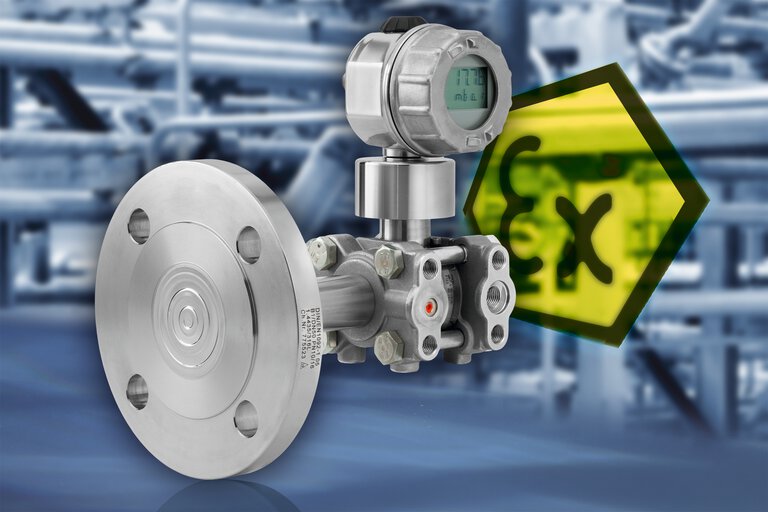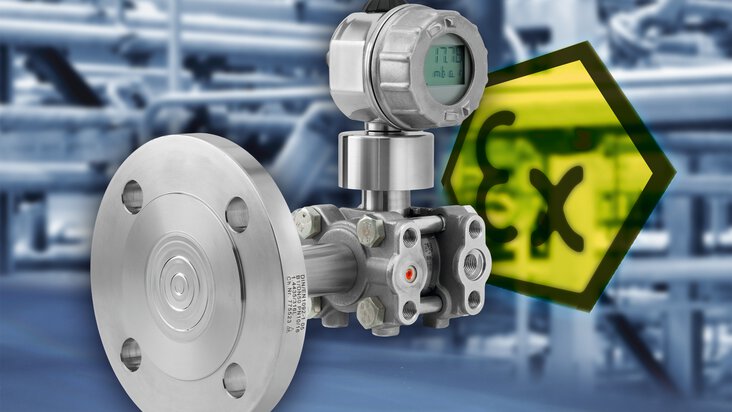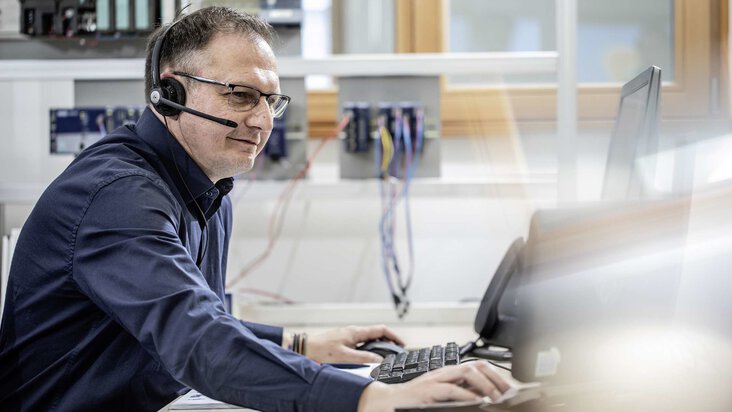
Differential Pressure Sensors – The Most Important FAQs at a Glance
Differential pressure measurements are used in numerous industrial applications including control and optimization. After all, they provide information about the mutual relationship of 2 pressure ranges. Special differential pressure sensors are used to determine the pressure difference safely and reliably. Find out more about the operating principle, the application areas, and the features of the clever sensors!
Table of content
What are differential pressure sensors?
Differential pressure sensors measure the difference between 2 absolute pressures p1 and p2 in gases, steam, and liquids. Among other applications they can be found in filter monitoring, level measurement in closed containers, and safety-critical systems. They are often referred to as differential pressure transmitters or differential pressure transducers.
How does a differential pressure transducer work?
A differential pressure sensor has 2 hermetically/air-tight sealed chambers, each with a process connection, which are separated from each other by a flexible membrane with a glued on resistance bridge. The process connections are connected in front of and behind a possible pressure reduction so that the pressures act on the membrane in the opposite direction. If the pressure in the chambers is the same, the membrane remains flat. When the pressure in one of the chambers decreases or increases, the membrane tilts towards the chamber with the lower pressure. The degree of deformation corresponds to the difference of the 2 pressures: p2-p1=Δp. This can be detected by the change in resistance value, which can be converted into an electrical signal for further processing.

A differential pressure sensor has two process connections. The pressures act in opposite directions on the diaphragm. The measurement result is always the difference between the two pressures p2 - p1 = ∆p.
What are the different types of differential pressure sensors?
A distinction is made between piezoresistive and capacitive measurement. Most differential pressure sensors are now based on the piezoresistive effect (the change in electrical resistance of a material caused by tension or pressure). This effect is achieved by metallic strain gauges, which are glued to the elastic membrane already mentioned, or by silicon wafers. In contrast to strain gages, the measuring resistors are integrated directly into the silicon membrane so that no strain gauges need to be glued. This way, measurement accuracy, temperature resistance, and durability are increased. In addition, silicon sensors are significantly less expensive than thin-film sensors. All piezoresistive differential pressure sensors are virtually drift-free.
Capacitive transmitters for differential pressure have a capacitor integrated in a silicon chip, which allows conclusions to be drawn about the resulting pressure difference by changes in its capacity.
Where are differential pressure sensors used?
Differential pressure sensors are found wherever pressure ratios have to be continuously measured and checked (for example in filter monitoring or flow measurement).
Filter monitoring
In ventilation systems, the differential pressure can be used to determine the degree of contamination in a filter when the pressures are measured in front of and behind the filter. The more contaminated the filter element, the more resistance it offers to the medium flowing through it.
Flow measurement
Another field of application for differential pressure sensors is flow measurement in pipes. This differential pressure method requires a primary element to be installed in the pipe. Primary elements are available in various designs. They taper the cross-section of the pipe and thereby provide the flowing medium with a resistance defined by their geometry. This results in a local increase in the flow velocity at the point of constriction, which in turn results in a change to the static pressure before (p1 stat) and after (p2 stat) the primary element. The pressure connections for measurements are located directly in front of and behind the primary element. The pressure difference is an indirect measure of the flow.

Active pressure transducer with static pressure decrease
p1stat - static pressure before the venturip2stat - static pressure after the venturi
∆p - pressure difference (indirect measure of flow rate).
How do differential pressure transducers behave in long-term use?
Measuring devices are exposed to a wide variety of mechanical, thermal, or chemical stresses so that the measured values change and lose accuracy over time. Zero offsets or hysteresis, for example, can lead to safety risks and a reduction in process efficiency. Regular calibration cannot prevent such changes, but it can detect them in time. For mechanical and electrical pressure measuring devices, it is therefore recommended to perform a Calibration once a year.
Which differential pressure sensor is the right one?
Differential pressure sensors and differential pressure transmitters are available in numerous versions. Whether a sensor can be used in a particular application depends primarily on the minimum and maximum pressure level that can be processed, the environmental influences of the application, and the media suitability. For example, capacitive pressure sensors lead to measurement inaccuracies in applications with strong vibration; not every sensor can tolerate aggressive gases and liquids. Depending on the type of application, certain approvals are required. Examples include SIL 2/SIL 3 according to DIN EN 61508, PL according to DIN EN 13849, or a version for explosion-proof areas. In case of uncertainty, a detailed consultation should be requested.
- ${title}${badge}



